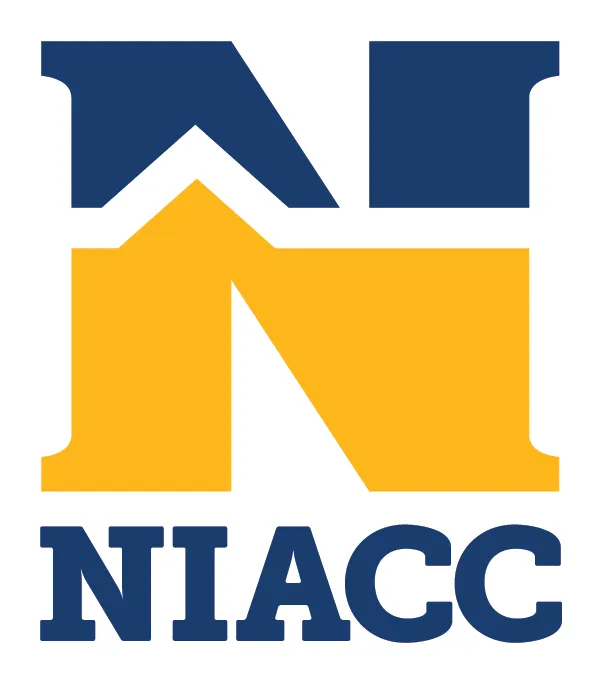Student Loan Repayment
Students can view the terms of their Federal Direct Subsidized and Unsubsidized student loans by logging on to studentaid.gov to review their Master Promissory Note.
Finding the Right Repayment Plan
NIACC wants students to understand the importance of repaying student loans. Repayment begins after a student drops below half time or completes their program of study. Loan Entrance and Exit Counseling review when a student enters repayment and discusses the “grace period.”
The federal government offers several repayment plan options to provide flexibility for the student. Use the Repayment Estimator to see which plans a student may be eligible for and fits their current situation. The estimator will show how much they would pay monthly and over the life of the loan.
Students in repayment should select the repayment plan that best fits them. If a plan is not selected, the student will be placed on the Standard Repayment Plan. A student can select a different repayment plan at any time to meet their needs by contacting their loan servicer.
Sample Loan Repayment Plan:
In the example below, the student’s loan balance was $8,262 with an average interest rate of 4%. The student’s projected loan payments are listed for a variety of repayment plan options.
| Repayment Plan | Repayment Period | Monthly Payment Initial to Final Amounts | Projected Loan Forgiveness | Total Interest Paid | Total Amount Paid |
|---|---|---|---|---|---|
| Standard | 120 months | $84 to $84 | – | $1,760 | $10,022 |
| Graduated | 120 months | $47 to $140 | – | $2,196 | $10,458 |
| Pay As You Earn | 129 months | $65 to $84 | $0 | $1,967 | $10,229 |
| Income Based Repayment (IBR) | |||||
| Income Contingent Repayment (ICR) | 190 months | $50 to $72 | $0 | $3,106 | $11,368 |
How to Make A Payment on Student Loans
Student loan payments go directly to the student’s assigned loan servicer. A loan servicer handles all billing regarding a student loan.
Don’t know who your loan servicer is? Go to studentaid.gov to log in with your FSA ID and find out!
Servicer Websites
- Edfinancial- https://edfinancial.com/home
- MOHELA- https://www.mohela.com/
- Aidvantage- https://aidvantage.com/
- Nelnet- https://nelnet.com/welcome
- OSLA Servicing- https://public.osla.org/
- ECSI- https://efpls.ed.gov/
- Default Resolution Group- https://myeddebt.ed.gov/
Trouble Making Student Loan Payment
If you’re having trouble making a student loan payment there are several options available to keep your loan in good standing.
- Change your payment due date – Contact your servicer to change the date your student loan payment is due on to help you manage your expenditures
- Change your repayment plan – Contact your servicer to switch to a repayment plan that would better suit your budget. For example, if you need lower monthly payments, consider an income-driven repayment plan. This type of plan bases your monthly payments on how much you make.
- Postpone your payments – Contact your servicer to see if you are eligible for a deferment or forbearance.
- Deferment is a period during which repayment of the principal and interest of your loan are temporarily delayed. There are several situations in which a student may qualify for a deferment such as enrollment in-school (6 credit hours or more), a period of unemployment, economic hardship or active duty in military service.
- Forbearance is a period where payments are postponed or reduced. Interest will continue to accrue on the loans in forbearance. You may qualify for forbearance if you are experiencing a financial hardship or illness.
Once you are in repayment, it is very important to avoid delinquency and default on your student loans. Default is the failure to repay your loan according to the terms of the Master Promissory Note.
Your servicer is there to help you if you are having trouble making payments on your Federal Student Loans. Contact your loan service for help and assistance. Let them know you are having trouble making your monthly payments so they can assist you in setting up a different repayment plan or getting a deferment or forbearance. NEVER ignore delinquency or default notices from your servicer.
Some consequences of default include:
- Entire loan balance due, immediately
- Loss of eligibility for loan deferment options
- Not eligible for federal student aid at any U.S. school
- Account turned over to collection agencies
- Credit rating damaged
- Difficulty qualifying for credit cards, car loan, mortgage, renting an apartment, etc.
- Federal & state income tax refunds withheld
- Wages garnished
- Cannot obtain a professional license
If you are currently in default, you can take steps to rehabilitate the loan. Typically, you must agree to make nine monthly payments within 20 days of the due date during a 10 month period. You can also pay off your loan in full. For specific details, work with the debt collection agency.
